Genus Camelus Phylum Chordata | Family Camelidae Scientific name Camelus bactrianus Rank Species Order Even-toed ungulate | |
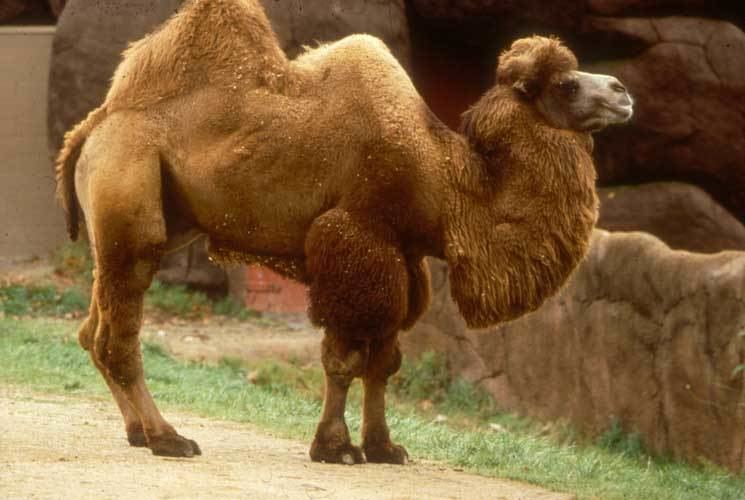 | ||
Similar | ||
The bactrian camel
The Bactrian camel (Camelus bactrianus) is a large, even-toed ungulate native to the steppes of Central Asia. The Bactrian camel has two humps on its back, in contrast to the single-humped dromedary camel. Its population of two million exists mainly in the domesticated form. Some authorities, notably the International Union for Conservation of Nature (IUCN), use the binomial name Camelus ferus for the wild Bactrian camel and reserve Camelus bactrianus for the domesticated Bactrian camel. Their name comes from the ancient historical region of Bactria.
Contents
- The bactrian camel
- Dromedary camel bactrian camel the differences
- Taxonomy
- Differences between Camelus ferus and Camelus bactrianus
- Description
- Natural habitat
- Life history
- Diet
- Reproduction
- History
- Evolutionary history
- Imported to US
- Documentaries
- References
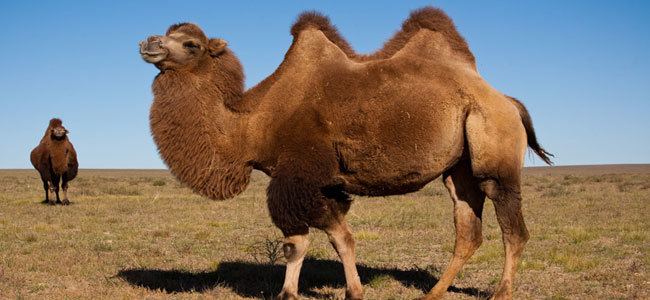
The domesticated Bactrian camel has served as a pack animal in inner Asia since ancient times. With its tolerance for cold, drought, and high altitudes, it enabled the travel of caravans on the Silk Road. A small number of feral Bactrian camels still roam the Mangystau Province of southwest Kazakhstan and the Kashmir Valley in India.

Dromedary camel bactrian camel the differences
Taxonomy
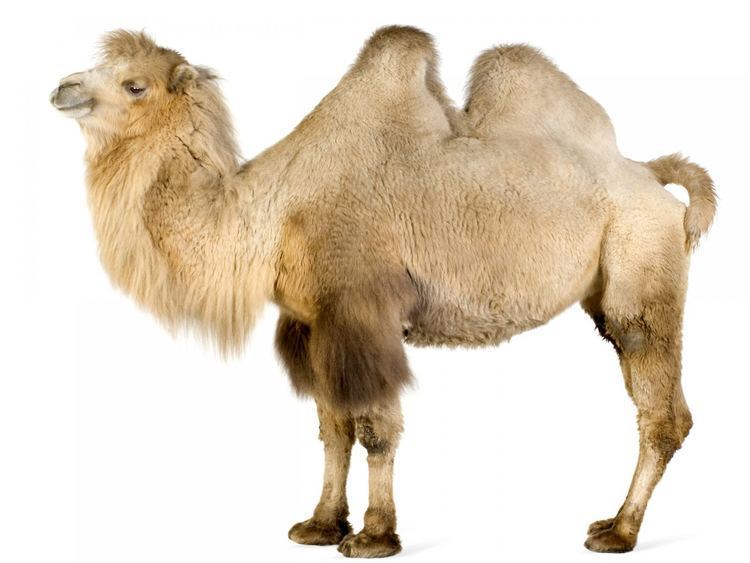
The Bactrian camel shares the genus Camelus with the dromedary (C. dromedarius) and the wild Bactrian camel (C. ferus). The Bactrian camel belongs to the family Camelidae. The ancient Greek philosopher Aristotle (4th century BC) was the first to describe the species of Camelus. He named two species in his History of Animals: the one-humped Arabian camel and the two-humped Bactrian camel. The Bactrian camel was given its current binomial name Camelus bactrianus by Swedish zoologist Carl Linnaeus in his 1758 publication Systema Naturae.
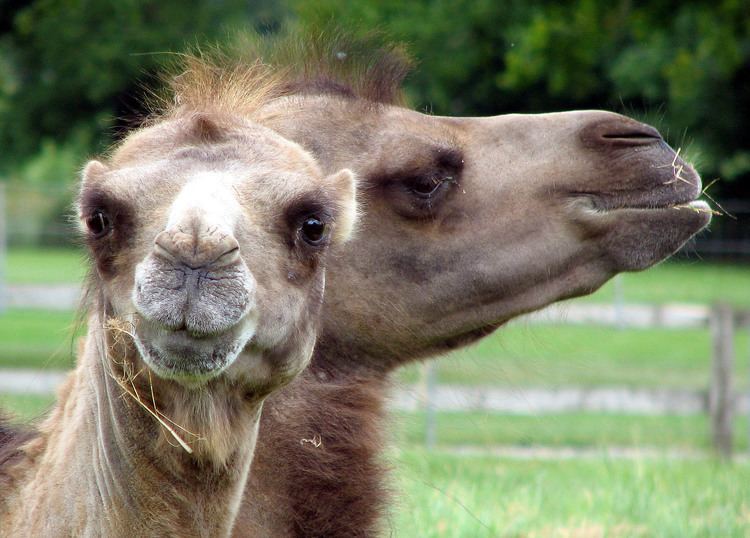
In 2007, Peng Cui (of the Chinese Academy of Sciences) and colleagues carried out a phylogenetic study of the evolutionary relationships between the two tribes of Camelidae: Camelini - consisting of the three Camelus species (the study considered the wild Bactrian camel as a subspecies of the Bactrian camel) - and Lamini - consisting of the alpaca (Vicugna pacos), the guanaco (Lama guanicoe), the llama (L. glama) and the vicuña (V. vicugna). The study revealed that the two tribes had diverged 25 million years ago (early Miocene), notably earlier than what had been previously estimated from North American fossils. Speciation began first in Lamini as the alpaca came into existence 10 million years ago (late Pleistocene). Nearly two million years later, the Bactrian camel and the dromedary emerged as two independent species.
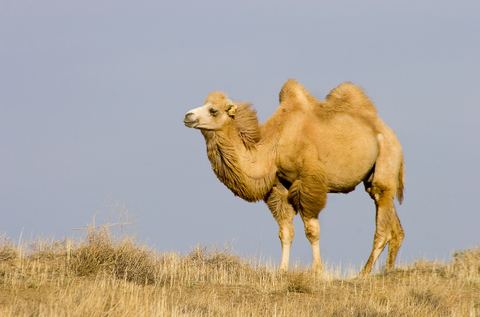
The Bactrian camel and the dromedary often interbreed to produce fertile offspring. Where the ranges of the two species overlap, such as in northern Punjab, Persia and Afghanistan, the phenotypic differences between them tend to decrease as a result of extensive crossbreeding between them. The fertility of their hybrid has given rise to speculation that the Bactrian camel and the dromedary should be merged into a single species with two varieties. However, a 1994 analysis of the mitochondrial cytochrome b gene revealed that the species display 10.3% divergence in their sequences.
Differences between Camelus ferus and Camelus bactrianus
The wild Bactrian camel (Camulus ferus) was first described by Nikolay Przhevalsky in the late 19th century and has now been established as a distinct species from the Bactrian camel (Camelus bactrianus).
Zoological opinion nowadays tends to favour the idea that C. bactrianus and C. dromedarius are descendants of two different subspecies of C. ferus (Peters and von den Driesch 1997: 652) and there is no evidence to suggest that the original range of C. ferus included those parts of Central Asia and Iran where some of the earliest Bactrian remains have been found.
In particular, a population of wild Bactrian camel has been discovered to live within a part of the Gashun Gobi region of the Gobi Desert. This population is distinct from domesticated herds both in genetic makeup and in behavior.
As many as three regions in the genetic makeup are distinctly different from Bactrian camels, with up to a 3% difference in the base genetic code. However, with so few wild camels, what the natural genetic diversity within a population would have been is not clear.
Another difference is the ability of these wild camels to drink saltwater slush, although whether the camel can extract useful water from it is not yet certain. Domesticated camels are unable to drink such salty water.
Description
The Bactrian camel is the largest mammal in its native range and is the largest living camel. Shoulder height is from 180 to 230 cm (5.9 to 7.5 ft), head-and-body length is 225–350 cm (7.38–11.48 ft), and the tail length is 35–55 cm (14–22 in). At the top of the humps, the average height is 213 cm (6.99 ft). Body mass can range from 300 to 1,000 kg (660 to 2,200 lb), with males often being much larger and heavier than females. Its long, wooly coat varies in colour from dark brown to sandy beige. A mane and beard of long hair occurs on the neck and throat, with hairs measuring up to 25 cm (9.8 in) long. The shaggy winter coat is shed extremely rapidly, with huge sections peeling off at once, appearing as if sloppily shorn. The two humps on the back are composed of fat (not water as is sometimes thought). The face is typical of a camelid, being long and somewhat triangular, with a split upper lip. The long eyelashes, along with the sealable nostrils, help to keep out dust in the frequent sandstorms which occur in their natural range. The two broad toes on each foot have undivided soles and are able to spread widely as an adaptation to walking on sand. The feet are very tough, as befits an animal of extreme environments.
Natural habitat
These camels are migratory, and their habitat ranges from rocky mountain massifs to flat arid desert, stony plains, and sand dunes. Conditions are extremely harsh – vegetation is sparse, water sources are limited and temperatures are extreme, ranging from as low as −40 °C in winter to 40 °C in summer. The camels’ distribution is linked to the availability of water, with large groups congregating near rivers after rain or at the foot of the mountains, where water can be obtained from springs in the summer months, and in the form of snow during the winter.
Life history
Bactrian camels are exceptionally adept at withstanding wide variations in temperature, ranging from freezing cold to blistering heat. They have a remarkable ability to go without water for months at a time, but when water is available they may drink up to 57 liters at once. When well fed, the humps are plump and erect, but as resources decline, the humps shrink and lean to the side. When moving faster than a walking speed, they pace, by stepping forwards with both legs on the same side (as opposed to trotting, using alternate diagonals as done by most other quadrupeds). Speeds of up to 65 kilometres per hour (40 mph) have been recorded, but they rarely move this fast. Bactrian camels are also said to be good swimmers. The sense of sight is well developed and the sense of smell is extremely good. The lifespan of Bactrian camels is estimated at up to 50 years, often 20 to 40 in captivity.
Diet
Bactrian camels are diurnal, sleeping in the open at night and foraging for food during the day. They are primarily herbivorous. They are able to eat plants that are dry, prickly, salty and/or bitter, and can ingest virtually any kind of vegetation. When other nutrient sources are not available, these camels may feed on carcasses, gnawing on bones, skin, or various different kinds of flesh. In more extreme conditions, they may eat any material they find, which has included rope, sandals, and even tents. Their ability to feed on a wide range of foods allows them to live in areas with sparse vegetation. With tough mouths that can withstand sharp objects such as thorns, the digestion process begins. The first time food is swallowed, it is not fully chewed. The partly masticated food (called cud) goes into the stomach and later is brought back up for further chewing.
Bactrian camels belong to a fairly small group of animals that regularly eat snow to provide their water needs. Any animals living above the snowline are obliged to do this, as snow and ice are the only forms of water during winter, and by doing so, their range is greatly enlarged. The latent heat of snow and ice is enormous compared with the heat capacity of water, demanding a large sacrifice in heat energy and forcing animals to eat only small amounts at a time.
Reproduction
Bactrian camels are induced ovulators — they ovulate after insemination of semen into the vagina; the seminal plasma, not the spermatozoa, induces ovulation. Ovulation occurs in 87% of females after insemination: 66% ovulate within 36 h and the rest by 48 h (the same as natural mating). The least amount of semen required to elicit ovulation is about 1.0 ml.
The mating season occurs in the fall. Males during this time are often quite violent and may bite, spit, or attempt to sit on other male camels. The age of sexual maturity varies, but is usually reached at 3 to 5 years. Gestation lasts around 13 months, with most young being born from March through April. One or occasionally two calves are produced, and the female can give birth to a new calf every other year. Young Bactrian camels are precocial, being able to stand and run shortly after birth, and are fairly large at an average birth weight of 36 kg (79 lb). They are nursed for about 1.5 years. The young calf stays with its mother for three to five years, until it reaches sexual maturity, and often serves to help raise subsequent generations for those years. Wild camels sometimes breed with domesticated or feral camels, as well.
History
The Bactrian camel is thought to have been domesticated (independent of the dromedary) sometime before 2500 BCE, in Northeast Afghanistan, or southwestern Turkestan. The dromedary camel is believed to have been domesticated between 4000 BCE and 2000 BCE in Arabia. As pack animals, these ungulates are virtually unsurpassed, able to carry 170–250 kg (370–550 lb) at a rate of 47 km (30 miles) per day, or 4 km/h (2 mph) over a period of four days.
Bactrian camels have been the focus of artwork throughout history. For example, western foreigners from the Tarim Basin and elsewhere were depicted in numerous ceramic figurines of the Chinese Tang dynasty (618–907).
Evolutionary history
As of the 1980s, a complete range of fossils suggests the first camelids appeared in North America about 30 million years ago, had relatively small body masses, and were adapted to warm climates. By the early Pleistocene (about 2 million years ago), they had already evolved into a form similar to the current Bactrian camel, and many individuals permanently migrated to the opposite end of the Bering Strait in an abrupt fashion, probably as a response to the advancing ice age. The remaining related types of American camelids are now only in South America.
Imported to US
Bactrian camels were imported to the US several times in the mid- to late 1800s, both by the US military and by merchants and miners, looking for pack animals sturdier and hardier than horses and mules. Although the camels proved worthy of their intended use, the US Camel Cavalry was never considered much of a success. Having brought two shipments of less than 100 camels to the US, plans were made to import another 1,000, but the US Civil War distracted such plans. Most surviving camels of these endeavors, both military and private, were merely turned loose to survive in the wild. As a result, small feral herds of Bactrian camels existed during the late 19th century in the southwest deserts of the United States.
